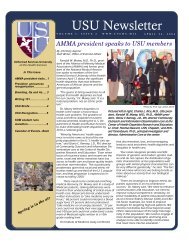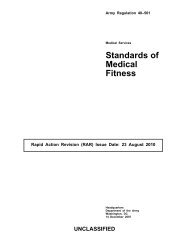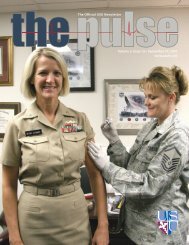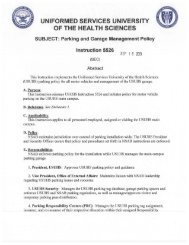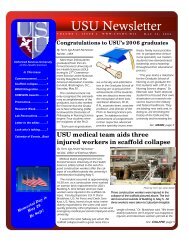Muscle strength and qualitative jump-landing differences in male ...
Muscle strength and qualitative jump-landing differences in male ...
Muscle strength and qualitative jump-landing differences in male ...
You also want an ePaper? Increase the reach of your titles
YUMPU automatically turns print PDFs into web optimized ePapers that Google loves.
670<strong>Muscle</strong> <strong>strength</strong> <strong>and</strong> movement pattern <strong>differences</strong>LESS Item1 Knee flexion angleat <strong>in</strong>itial contact2 Hip flexion angle at<strong>in</strong>itial contact3 Trunk flexion angleat <strong>in</strong>itial contact4 Ankle plantarflexionangle at<strong>in</strong>itial contact5 Knee valgus angleat <strong>in</strong>itial contact6 Lateral trunk flexionangle at <strong>in</strong>itialcontact7 Stance width –Wide8 Stance width –Narrow9 Foot position – ToeIn10 Foot position – ToeOut11 Symmetric <strong>in</strong>itialfoot contact12 Knee flexion displacement13 Hip flexion at maxknee flexion14 Trunk flexion atmax knee flexion15 Knee valgus displacementAppendixLESS Item Scor<strong>in</strong>gOperational Def<strong>in</strong>itionAt the time po<strong>in</strong>t of <strong>in</strong>itial contact, if the knee of the test legis flexed more than 30 degrees, score YES. If the knee is notflexed more than 30 degrees, score NO.At the time po<strong>in</strong>t of <strong>in</strong>itial contact, if the thigh of the test legis <strong>in</strong> l<strong>in</strong>e with the trunk then the hips are not flexed <strong>and</strong> scoreNO. If the thigh of the test leg is flexed on the trunk, scoreYES.At the time po<strong>in</strong>t of <strong>in</strong>itial contact, if the trunk is vertical orextended on the hips, score NO. If the trunk is flexed on thehips, score YES.If the foot of the test leg l<strong>and</strong>s toe to heel, score YES. If thefoot of the test leg l<strong>and</strong>s heel to toe or with a flat foot, scoreNO.At the time po<strong>in</strong>t of <strong>in</strong>itial contact, draw a l<strong>in</strong>e straight downfrom the center of the patella. If the l<strong>in</strong>e goes through themidfoot, score NO. If the l<strong>in</strong>e is medial to the midfoot, scoreYES.At the time po<strong>in</strong>t of <strong>in</strong>itial contact, if the midl<strong>in</strong>e of the trunkis flexed to the left or the right side of the body, score YES.If the trunk is not flexed to the left or right side of the body,score NO.Once the entire foot is <strong>in</strong> contact with the ground, draw a l<strong>in</strong>edown from the tip of the shoulders. If the l<strong>in</strong>e on the side ofthe test leg is <strong>in</strong>side the foot of the test leg then score greaterthan should width (wide), <strong>and</strong> score YES. If the test foot is<strong>in</strong>ternally or externally rotated, grade the stance width basedon heel placement.Once the entire foot is <strong>in</strong> contact with the ground, draw a l<strong>in</strong>edown from the tip of the shoulders. If the l<strong>in</strong>e on the side ofthe test leg is outside of the foot then score less than shoulderwidth (narrow), score YES. If the test foot is <strong>in</strong>ternally orexternally rotated, grade the stance width based on heelplacement.If the foot of the test leg is <strong>in</strong>ternally rotated more than 30degrees between the time period of <strong>in</strong>itial contact <strong>and</strong> maxknee flexion, then score YES. If the foot is not <strong>in</strong>ternallyrotated more than 30 degrees between the time period of<strong>in</strong>itial contact to max knee flexion, score NO.If the foot of the test leg is externally rotated more than 30degrees between the time period of <strong>in</strong>itial contact <strong>and</strong> maxknee flexion, then score YES. If the foot is not externallyrotated more than 30 degrees between the time period of<strong>in</strong>itial contact to max knee flexion, score NO.If one foot l<strong>and</strong>s before the other or if one foot l<strong>and</strong>s heel totoe <strong>and</strong> the other l<strong>and</strong>s toe to heel, score NO. If the feet l<strong>and</strong>symmetrically, score YES.If the knee of the test leg flexes 45 degrees more than theangle at the position of <strong>in</strong>itial contact to max knee flexion,score YES. If the knee of the test leg does not flex morethan 45 degrees, score NO.If the thigh of the test leg flexes more on the trunk from<strong>in</strong>itial contact to max knee flexion angle, score YES. If thethigh does not flex more on the trunk, score NO.If the trunk flexes more from the po<strong>in</strong>t of <strong>in</strong>itial contact tomax knee flexion, score YES. If the trunk does not flexmore, score NO.At the po<strong>in</strong>t of max knee valgus on the test leg, draw a l<strong>in</strong>estraight down from the center of the patella. If the l<strong>in</strong>e runsthrough the great toe or is medial to the great toe, score YES.If the l<strong>in</strong>e is lateral to the great toe, score NO.CameraViewErrorConditionLESSScoreSide No Y=0N=1Side No Y=0N=1Side No Y=0N=1Side No Y=0N=1Front Yes Y=1N=0Front Yes Y=1N=0Front Yes Y=1N=0Front Yes Y=1N=0Front Yes Y=1N=0Front Yes Y=1N=0Front No Y=0N=1Side No Y=0N=1Side No Y=0N=1Side No Y=0N=1Front Yes Y=1N=0




